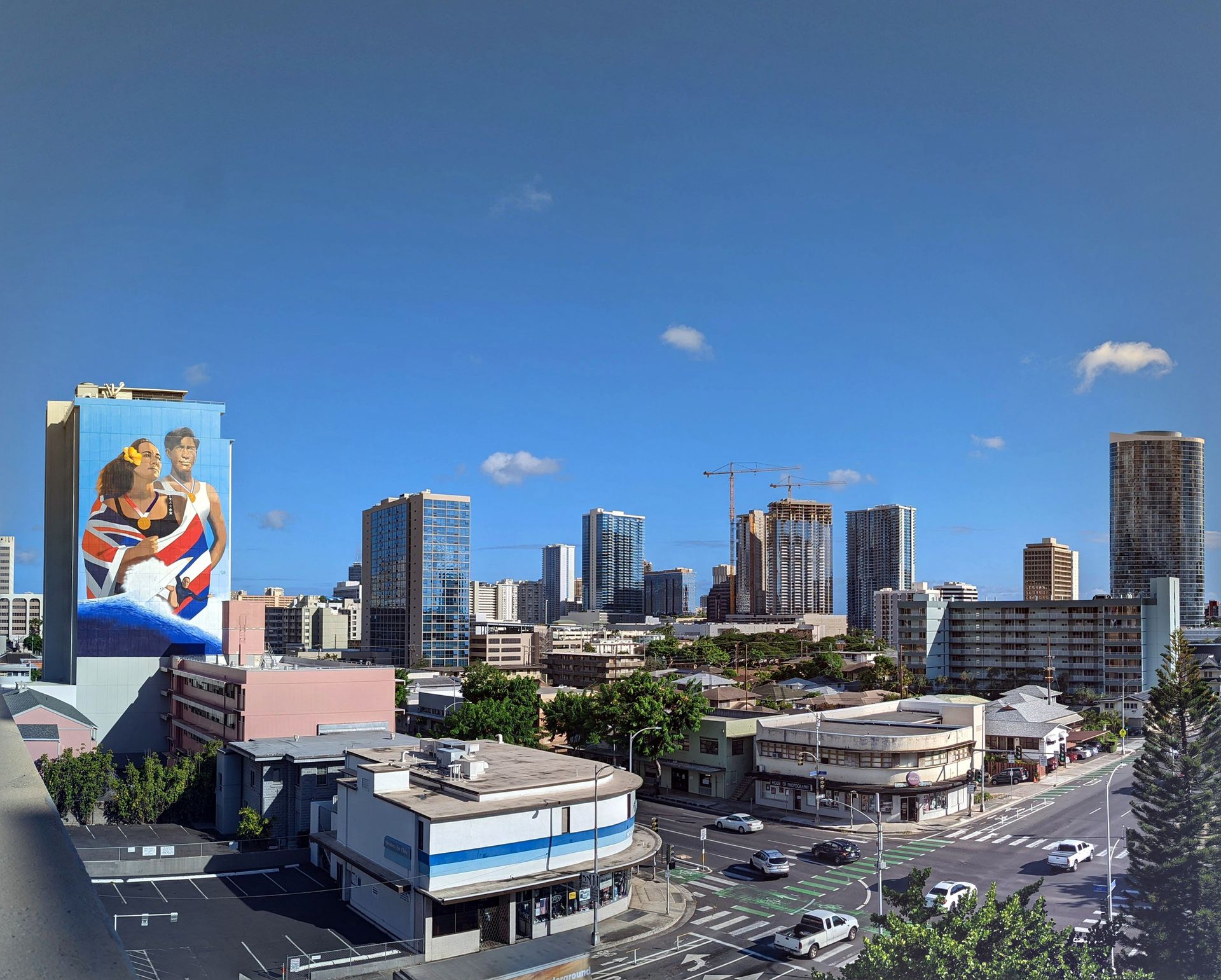
September 2023 Email Update
The August median sales price for single-family homes was $1,110,000 (1.4% lower than August 2022) and for condos was $515,000 (3.3% higher than August 2022). Demand continues to slide with a 19.7% drop in single-family home sales last month and a 16.9% drop in condo sales. Pending sales continue to decline with 14.4% fewer single-family contracts waiting to close and 10.5% fewer condo contracts. Fewer sellers are putting their homes on the market with a 13.4% reduction in new single-family home listings and 9.7% fewer condo listings. It appears that the market still has months to go before reaching a new equilibrium from rising interest rates.
You can review more detailed current and past real estate market data on our website using the link below.
Residents of affordable housing are being forced out by Honolulu’s Bill 7 that provides developers breaks in zoning requirements and city fees. In one example, 15 tenants living at 1202-A Pua Lane have received notices to move so that a new 60-unit building can be built. Tenants currently pay $500 to $1,300 per month and a new two-bedroom affordable apartment can fetch $2,947 per month according to current affordable housing rent rates in Honolulu. Tim noticed in 2020 when filling out a University of Hawaii Economic Research Organization (UHERO) survey that a majority of Stott Property Management’s rentals rented for less than Honolulu’s affordable housing rent rates. Why the city and state are not making vacant land available for high density housing is a head scratcher considering that only 7% of Hawaii’s land is currently zoned for housing. Hawaii’s current affordable housing initiatives are destined to fail Hawaii’s lower income residents.
Maui wildfires fanned by high winds from Hurricane Dora killed 115 people and destroyed historic Lahaina and damaged or destroyed more than 2300 structures including 2,000 homes. More than 2,000 people were housed overnight on August 8th, and 4,000 visitors were flown to Oahu on August 9th. Fourteen people had to be rescued after jumping in the water to escape the Lahaina wildfires. Three victims have been flown to Oahu and were treated at Straub Hospital’s burn unit. 100 firefighters fought the blaze and high winds knocked over 30 utility poles causing additional fire and destruction. Many flights to Maui have been canceled and visitors are encouraged to check their reservations before making the trip. Officials don’t expect to know the extent of the damage for weeks. The state Attorney General started a formal investigation into the decision-making and policies before and during the wildfires. No sirens were activated to warn residents of the incoming danger and many in Lahaina woke up in the middle of the night to their neighborhood burning down, too late to escape. The Hawaii Emergency Management Agency and Maui Emergency Management Agency triggered alerts to cell phones, TV, and radio, however, Lahaina was without power for most of Tuesday with power poles and some cell phone towers down. Police and fireman were going down streets with their sirens on, knocking door-to-door. Many of the dead were found in burned out cars trying to escape.
Lahaina firefighters were denied their primary tool for fighting fires when the town’s water system collapsed. The town relies on creek surface water and ground water pumped from wells which were strained from the current drought. The deputy director of water resource management from the state Department of Land and Natural resources delayed the release of water to landowners who wanted to protect their property from the fire for much of the day. The water was not released until 2 ½ hours after the fire had spread and nine hours after the initial request for the water. Firefighters noticed that the water pressure was dropping when the fire jumped over the highway and consumed houses. The resulting water leaks from melted pipes in the destroyed homes resulted in the fire hydrants running dry. Additionally, hurricane force winds prevented helicopters from carrying seawater inland to dump it on the wildfires. Firefighters had to halt their attempts to stop the fire and risked their lives to save as many Lahaina residents as they could.
Maui County officials released the names of 385 people who are still missing as of September 4th. The Federal Bureau of Investigation (FBI) worked with the county to compile the list and released it in hopes of having the missing individual or friends and family contact the FBI to inform them the individual is safe. 1,732 people originally reported missing have been found safe. The state Department of Education has been unable to account for 495 students as of September 7th and state officials don’t know how many students have died in the fire. Only 55 of the 115 people known to have died in the wildfires have been identified.
Before-and-after video reveals Maui's wildfire damage
Maui County sued Hawaiian Electric Company (HECO) on August 23rd for failing to de-energize downed power lines, accusing the company of starting the wildfire that leveled Lahaina. HECO announced in a press release on August 28thdenying Maui County’s contention. HECO claims the power lines were de-energized for six hours before the wildfire ignited at 3:00 pm on August 8th and HECO will vigorously defend itself in court if necessary.
Officials recommend making cash donations if you are planning to send relief to the wildfire survivors. Maui’s port has been overwhelmed by food, clothing, and other donations because there are not enough vehicles to take them away from the dock. Relief coordinators also ask individuals to avoid self-deploying because Lahaina is closed off as teams search for human remains.
State and federal workers have started the cleanup of Lahaina Harbor the week of September 4th after completing a search for bodies in the harbor and nearshore waters. Officials don’t know how many boats sunk but the harbor had 99 boat slips reported near capacity when the wildfires broke out. An absorbent boom has been deployed around the harbor to contain hazardous materials and an initial assessment was made with remotely operated submersible vehicles. Three contractors have been designated to help with the cleanup efforts and 33 Coast Guard personnel have initially been assigned to the effort. The Coast Guard won’t allow public access to the established safety zone until the navigation channel has been freed of debris and harmful chemicals.
The University of Hawaii Economic Research Organization (UHERO) issued a report on the economic impact from the wildfires. The economic losses currently include about $70 million per month from the destruction of Lahaina businesses and about $13 million per day from the closure of West Maui including Kaanapali to visitors. The number of visitors has dropped about 75% resulting in layoffs of about 15,000 employees so far. Here is a link to the full article.
After the Maui wildfires: The road ahead
“Tree-huggers” are working to revive a 150-year-old banyan tree in Lahaina after an arborist found no significant signs of charring or cracking of the main trunk or root system and the ground did not appear to be burned and the benches were still standing. The group is watering the tree and ground daily and will put down a layer of compost to help the tree heel. The tree was a gift from India in 1873 and has been providing shade for residents and visitors for generations. Here is a picture of Tim and Tracey’s kids playing in the tree during a family vacation.
Greater Good Charities in partnership with Southwest Airlines and Lucky Dog Animal Rescue flew 130 sheltered kittens, cats, and dogs to Portland Oregon to make room for injured, lost, and displaced pets from the Maui Wildfires. A Portland Oregon resident immediately adopted Toulouse, when she learned Toulouse, the kitten she sponsored after finding him hiding in a cabinet at the sanctuary, was on the flight.
A state senator from Maui announced he would retire on October 31, 2023, so he could participate in the lawsuits from Maui wildfire victims as a partner in law firm Takatani, Agaran, Jorgensen, & Wildman.
A Honolulu wastewater executive, Milton Choy, was sentenced to three years in prison for a multi-million-dollar bribery scheme, paying over $2 million in bribes in return for $19.3 million in sole-source contracts. Choy paid Stewart Stant, the then Director of Maui County Department of Environmental Management who spent the money on hostess bars, luxury hotel stays, travel, and jewelry. Choy also paid bribes to convicted former Senate Majority Leader J. Kalani English and former state Representative Ty Cullen. The bribery scheme is considered the largest in Hawaii’s history.
Another Department of Planning and Permitting (DPP) employee has been sentenced to prison for taking bribes to fast-track projects through the permitting process. She is the fifth person convicted of taking bribes from architects totaling more than $300,000 combined.
The state’s long-term care crisis continues to worsen. 219 hospital patients are ready for discharge and have been waitlisted for an average of 123 days for a space in a long-term care facility. One hospital patient has been waiting two years. Some licensed facilities have beds available but don’t have the nurses and nursing assistants available to take care of the additional patients. Assisted living facilities won’t take the patients because Medicaid won’t reimburse them for their services.
The City and County of Honolulu opened a new lifeguard tower at Kahe Point, more commonly known as “Electric Beach” due to the electric power plant outlet that returns warm water from the plant to the ocean about 100 yards offshore. The lifeguards have acted about 160 times per day to prevent beachgoers from injuring or killing themselves and many beachgoers check in at the tower to ask about ocean safety before swimming. Tim and Tracey have conducted ocean swims several times over the years marveling at the variety of tropical fish attracted by the warm water from the power plant outlet and have witnessed pods of dolphins swim by.
Swim with Us
Three Kaneohe-based U.S. Marines were killed in a V-22B Osprey crash in the jungle of a northern Australian island while participating in Predator’s Run, a multi-national training exercise. Fifteen U.S. Marines were onboard, nine have been treated and released, and three remain in the hospital with more serious injuries. There have been five deadly crashes involving the Osprey since 2012.
The U.S. Navy started repacking operations to fill empty pipelines on August 28th to remove air and commence gravity draining of the Red Hill Fuel Tanks by October 16th. The repacking operation will take several days where the integrity of the system will be reverified and gravity draining will follow and conclude roughly three months later. The U.S. Navy will then have to decide how to remove the remaining 100,000 to 400,000 gallons of fuel remaining in the tanks after completing the gravity drain.
The City and County of Honolulu awarded a $2.58 million contract to remove the Haiku Stairs, known as the “Stairway to Heaven” and the Moanalua Saddle Stairs. The Nakoa Companies, Inc. was chosen for its specialization in complex construction projects. The process will include having a biologist inspect each section of the stairs before removal to protect the native plants and add native plants as necessary to prevent erosion.
The Honolulu District Courthouse was closed on August 16th due to damage by a contractor during the evening of August 15th to address structural damage. Coincidentally, one of Tracey’s friends texted pictures from a courthouse showing a garbage can catching a water leak from a ceiling, and “out-of-order” elevator, and section of tiled flooring blocked off and covered with plywood. The decay of the state’s infrastructure makes one wonder how Lahaina will ever be rebuilt.
The seventy Ho’olau Kanaka hula festival brought together Hawaiian practitioners to Moanalua Gardens including musicians, cultural experts, and eight hula halau. The annual event concludes with the halau performing hula in a noncompetitive environment. The purpose of the event is to educate and inspire people to continue the Hawaiian tradition while encouraging people to enjoy what they are doing and creating.
Zippy’s is opening its first restaurant outside Hawaii in Las Vegas this fall. Tracey grew up eating at Zippy’s and was dismayed when we moved to Pflugerville, TX and thought her kids would grow up eating at Springhill Café. Fortunately, we moved to Hawaii in 2004 and our kids enjoyed the meals that Tracey grew up with.





